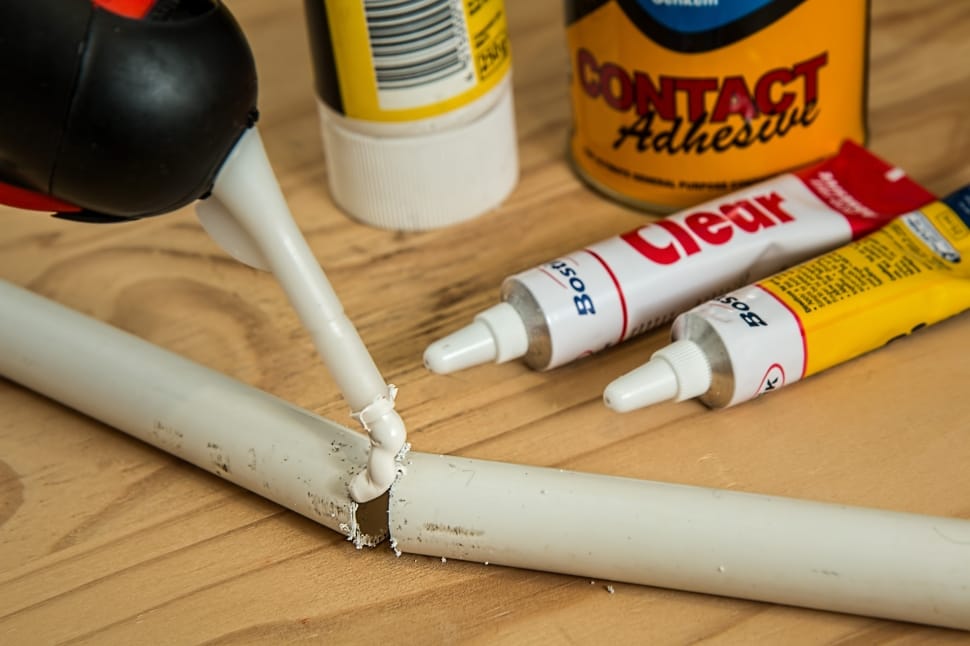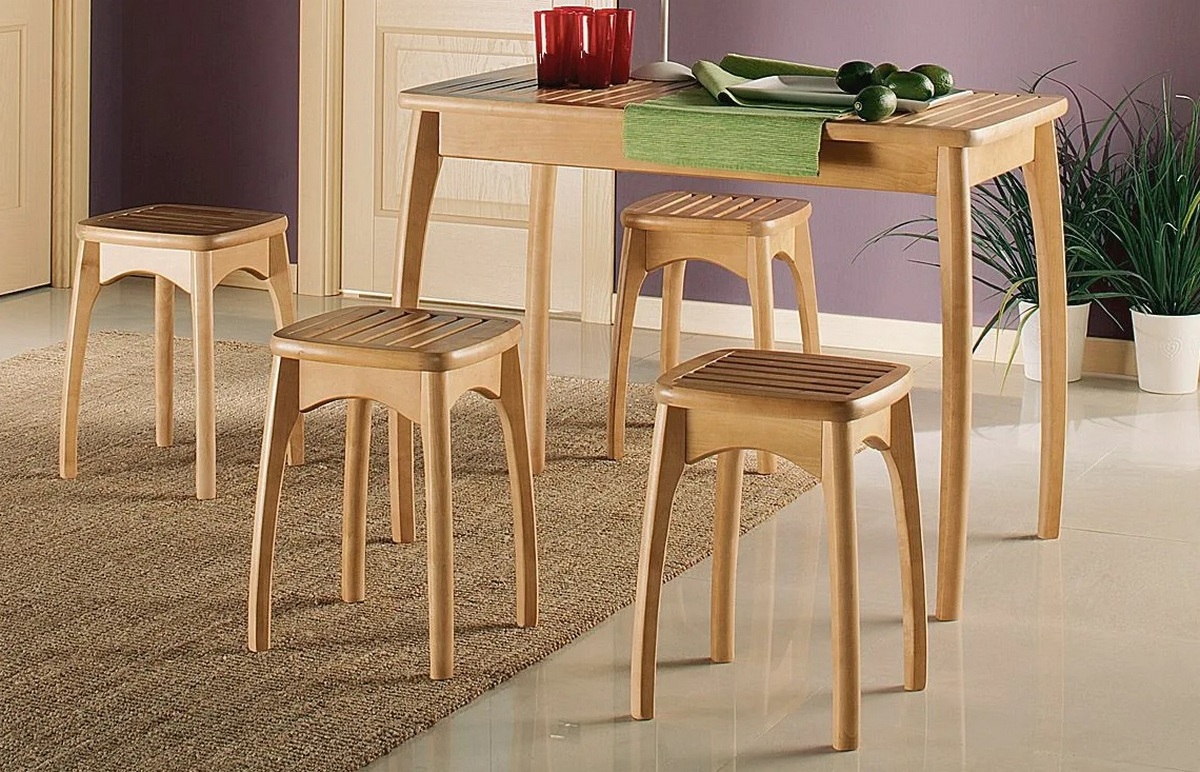Rating of the best interior soundproof doors for 2025

Soundproof doors for interior openings differ from standard entrance doors in many ways. Here and finishing, and the general complete set, and internal filling. Of course, their price becomes higher from this, but the level of comfort they create increases. With their help, it is possible to comfortably retire, relax calmly, and, or work in silence, if the environment is full of extraneous sounds. Good doors of this type will become a reliable anti-noise barrier and they are popular not only among residents of apartment buildings, but also among owners of large suburban real estate.

Content [Hide]
- 1 Design of a soundproof interior door
- 2 Noise regulations
- 3 Hollow/solid doors with sound insulation
- 4 Soundproofing structure of interior doors
- 5 Features of soundproof interior doors
- 6 Competent installation of interior doors with soundproofing
- 7 Rating of the best interior soundproof doors for 2025
- 8 Conclusion
Design of a soundproof interior door
The product in question will easily become an indispensable element not only for living quarters, but also for any large office. The level of noise reduction will also depend on the design properties and its quality. The basic parts of this design are the box and the sash itself. The first is traditionally performed in a U-shape, which is then installed in the opening. Sheds and a counterpart for a lock or latch are attached to the box. The sash is not some simple single-layer sheet, but has a multi-stage structure. In particular, it includes:
- Frame (usually made from inexpensive wood);
- External coating of MDF / chipboard sheets (it gives proper strength to the entire canvas and at the same time serves as a base for applying decorative finishes);
- Facing coating (responsible for the attractive appearance of the door structure);
- Accessories (various canopies, handles, latches and locks, closers).
The models under consideration can be hinged, i.e. when the sash opens outward from the room, or can be sliding, i.e. when the canvas moves along the wall. In the latter case, instead of canopies, it is necessary to install special rails, rollers are mounted on the sash, thanks to which the door moves. Some samples may include additional design elements, such as glass inserts.
Noise regulations

For soundproofing in construction, special standards are provided, which are enshrined in the State Standard No. 26602.3 of 1999, Building Regulations 2-12 of 1977 and 2.08.01 of 1989. According to the indicators given in these documents, the noise level in a residential area should not exceed 30 decibels. Accordingly, it is possible to achieve this level qualitatively by soundproofing doors. Most modern models for interior openings, in principle, allow this bar to be reached, but only if their canvas has special structural properties, since various materials can be used, some of which are barely able to fulfill the established conditions. The average door option from the budget segment will only protect against sounds with a power of 18-27 decibels, which corresponds to the noise level during a quiet conversation of several people. However, one must also take into account the airborne sound insulation index (Rw), which increases the overall figure by 2-5 units. From this it is clear that if a non-standard noise situation is created, then a simple door will not be able to suppress the sound in any way.
Hollow/solid doors with sound insulation
Interior door leafs can be made from a variety of materials: glass, plastic or wood. The most popular options are solid wood or materials that imitate it. It is easiest to divide such models into two categories: hollow and full-bodied. In the latter, there are no voids in the structure. They can be made from solid wood, which will significantly increase the cost of the product (especially if you choose valuable species as wood, for example, oak). If the type of wood is not very valuable, for example, pine, then several plates from it are simply glued together, forming a solid shield without voids, which is sheathed with MDF on top.
- Full-bodied structures have a number of undeniable advantages:
- Resistance to increased mechanical stress and overall high strength;
- They have excellent protection against the cold;
- They have high properties in terms of sound insulation.
- Of the shortcomings, only the overestimated cost can be distinguished.
- Hollow samples consist of a timber frame, on which chipboard sheets are simply fixed, on top of which sheathing from finishing panels is applied. Such products are inexpensive and very light. Their significant drawback is that they are extremely sensitive to mechanical stress and let through even the smallest noise.
IMPORTANT! To improve the soundproofing qualities of hollow doors, you just need to fill their internal cavities. Usually this filler is foam or mineral wool. It is also possible to use expanded polystyrene, special honeycomb cardboard, and other foamed substances.This amplification operation can even be done independently, using a synthetic winterizer from an old down jacket or any other soft insulation for this.
Soundproofing structure of interior doors
Qualitative characteristics in the field of sound insulation will depend on three main parameters:
- Sash filling. The accompanying documents should contain information about what material it is made of, whether it is hollow and whether there is a filler in it. As mentioned above, models made from solid wood or from several beams glued together show the best sound insulation. If the model is hollow, but has soundproof properties, then the characteristics of its filler are indicated in the documentation. These include: "view", the thickness of an individual element on average, the overall level of sound absorption of the filler. Foamed polyurethane and ordinary mineral wool are recognized as the best fillers.
- Sheathing. No less important for resisting extraneous sounds is the type of finishing coating, its density and thickness. It is worth noting that lamination, veneering or simply painting the door leaf will have virtually no effect on the ability to absorb sound waves. For this task, an MDF profile is better suited, but not every one, because they can vary in thickness. The thinnest modifications of MDF with a thickness of 4-5 millimeters are used in very budget samples, their soundproofing properties can be considered purely formal. MDF sheets with a thickness of 12 to 16 millimeters are already able to reliably isolate excess noise. Also, chipboard sheets with a standard thickness are also capable of providing a sufficient level of silence.
- Porch and seal.For traditional interior partitions, the sealant in the structure does not play a big role, but interior samples are simply obliged to have it in their design. The sealant can be a standard reinforced tubular plastic. Even ordinary rubber can be used for these purposes. The narthex is a kind of protrusion that is created on the canvas so that it can accommodate the desired type of filler of your choice. He simply presses against the door, and does not specifically sink into it. In this way, it is possible to increase sound insulation by 2-4 decibels.
IMPORTANT! In addition to the above factors, the fittings themselves and their quality will play a special role. If the hinges turn out to be rather weak, then the web may be skewed, which will form gaps that can transmit noise from the outside. And if the door handle has a large backlash (which does not guarantee tight clamping of the sash), then again a gap will appear and proper sound insulation cannot be observed.
Features of soundproof interior doors
The correct name for the door structures in question is “acoustic”. They are designed to minimize the amount of extraneous noise entering the locked room, as well as out of it. Their interior versions have a number of distinctive features:
- The canvas should not be very thin, the minimum thickness should be from 45 to 50 millimeters.
- There must always be a filler in the sash, it is not allowed to be hollow. Chipboard / MDF sheets with stiffeners are considered the best sheathing material for sound absorption (preferably if they are made on the basis of wooden blocks).
- Better performance parameters show multilayer structures.Their standard structure is 2-3 sheets of chipboard with a thickness of 1-2 centimeters, between which there are sheets of ordinary cork (thickness from 4-6 millimeters). The efficiency of such a design is from 30 to 35 decibels;
- An acoustic door must necessarily have several sealing circuits (traditional number - 2, premium models - 3 at once);
- The box must always be supplemented with a special threshold, in order to eliminate the gap under the door - it can be the main source of sound "leaks" both from the outside and from the inside. It is believed that the classic threshold made of wood is not particularly convenient, because you can accidentally catch on to it. Therefore, it is better to form a retractable threshold made of polymeric materials in the form of a curtain. It is possible to place it directly on the canvas, fixing or cutting along the bottom edge.
- The inner surface of the canvas should not only reflect sound waves, but be able to dampen them properly. This can be achieved by installing a wooden (necessarily embossed) insert. The noise load can also be reduced by means of soft materials (such as synthetic winterizer or batting), which are placed on the surface in a layer, and then covered with leatherette.
It should be noted that in addition to the above features, the competent installation of the entire structure into the openings will also play an important role, which will also affect the creation of the desired acoustic climate in the room. At the same time, it is possible to increase the level of noise insulation by covering windows and walls with protective materials (this applies to rooms with a large area).
Competent installation of interior doors with soundproofing
It is believed that the installation of acoustic doors is best left to professionals.To get the job done right the first time. If self-assembly is planned, then the main thing is not to make fatal mistakes. To do this, follow a few simple recommendations:
- The installation of the box should be carried out in such a way that not the slightest distortion is allowed, because the appearance of gaps and cracks will instantly disrupt the entire sound insulation system. It is possible to prevent this unpleasant situation by constantly checking the horizontal and vertical lines using the building level.
- The upper jumper must have the appropriate dimensions so that a large gap does not form on top. Its size can be more than 2-3 millimeters.
- In the event of an incorrect rack height calculation, a significant gap may also appear in the lower part. It is a mistake to leave a special gap of 1 centimeter below so that it will be automatically closed during a drawdown in the future. This is fundamentally wrong, since at the initial stage of operation such a gap will reduce the protective properties immediately by 5-7 decibels. At the same time, the flooring around the entire opening of the sash must be perfectly adjusted to it - the door must open without effort and contact with the floor.
- During the installation of the box, there is always a small technical gap between the wall and it. Most often, it is filled with mounting foam, which is an effective and versatile way. Mounting foam optimally seals all cracks and voids, however, its sound absorption coefficient leaves much to be desired (but for cement mortar, for example, this figure is even lower). Putty is also considered not the best option, because over time it will simply crack. You can also use liquid nails or silicone-based sealant, but they will only work when the voids to be sealed are very small in volume.
IMPORTANT! When installing fittings in the form of a latch or handle with a latch, it is necessary to properly make the inlet for the tongue. When it enters, no backlashes are allowed, the sash closes only gently, does not require the application of excessive muscular effort, despite the fact that the web is pressed to the right degree.
Difficulties of choice

For interior doors in an office, apartment or private house, their visual appeal is essential. Finishing the sash is simply obliged to harmoniously combine with the overall interior. The most important quality is also durability, unpretentious care, and the overall strength of the element, which will not allow even small scratches to form on it.
When choosing soundproof interior doors, you should pay attention to the following factors:
- The impeccability of the geometry of both the canvas and the box - the absence of gaps and cracks, coupled with the overall performance of door fittings, depends on them;
- Leaf thickness - the minimum indicator for it is 37 millimeters, but the larger it is, the more reliable the noise suppression;
- Internal filler - a soundproof model, by definition, cannot be hollow, the best filler option is a monolithic array or slabs with soft material;
- Sheathing - simple staining will not be enough, the best option is MDF / chipboard sheets with a thickness of at least 6 millimeters;
- Glazing - if decorative glazing is provided in the sash, then its thickness should be at least 6 millimeters, despite the fact that the area of \u200b\u200bthe glass is not very large and it is properly sealed around the perimeter;
- Sealant - its presence is mandatory, the best option is 2 circuits, one on the sash, the other on the box;
- The threshold - it is preferable that it be retractable - so it will protect from noise and will not interfere when passing through the door.
- In addition, before purchasing, you should definitely check the quality of door fittings - handles and locks must move freely, ensuring a good fit of the sash to the box.
Rating of the best interior soundproof doors for 2025
Budget segment
4th place: "Sofia Classic Soundproof Original"
votes 0
This heavy solid canvas has a melamine surface and is characterized by increased sound insulation. The pine shell and durable MDF cladding make the door strong and extremely durable. At the same time, powerful thermal insulation properties are realized in this sample. The fittings present in the model ensure a snug fit of the sash to the jambs, the door moves evenly and smoothly. The recommended cost for retail chains is 13,000 rubles.

- Powerful thermal insulation;
- Proper level of noise reduction;
- Elegant appearance.
- Quite a lot of weight.
3rd place: "Door Line" soundproof door 42 dB model 600, color White gloss, art. 4583157360"
votes 1
This model is distinguished by a stylish design and it has good constructive solutions. It seems completely "deaf", because it has no inserts. The material of manufacture is responsible for high strength, it is resistant to possible temperature changes. Excellent sound insulation of such doors is achieved through the use of a layer of mineral wool in its structure, coupled with a synthetic seal. The product is made of solid wood and can last a long time.The recommended cost for retail chains is 16,000 rubles.

- Acceptable weight;
- Stylish design;
- Execution without inserts.
- Not detected.
2nd place: Belwooddoors, Palazzo 3 model
votes 0
This sample is produced in the Republic of Belarus according to European technology. It is a deaf array, which increases its soundproofing qualities, increases its performance to 42 decibels instead of 30 standard ones. Perfect for any classic interior. The exterior finish is made with high quality polyurethane paints that will increase its overall service life. The scope of delivery includes a special facing architraves "Palazzo telescope". The recommended cost for retail chains is 22,000 rubles.

- Production material - high-quality pine beams;
- Additional decorative equipment;
- Painting with special wear-resistant paints.
- Again, quite a lot.
1st place: "Belarusian Doors", model "Ludovik PG"
votes 0
This interior option is made from a solid oak array. His style is distinguished by strict beauty, which allows him to fit into any classic interior. The outer coating is carried out using a two-component polyurethane varnish, all lamellas are made using one-piece technology and glued into a single joiner's board. In order to prevent damage during delivery, the manufacturer uses strong polyethylene packaging, and the door element itself is packed entirely in corrugated cardboard. The recommended cost for retail chains is 42,000 rubles.
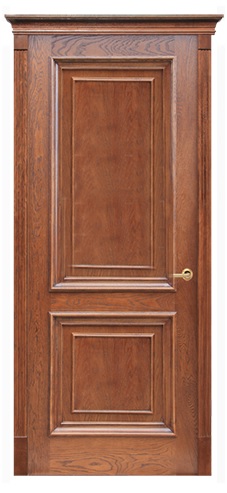
- Excellent lacquer finish
- Extended warranty (up to 2 years);
- Whole bar solid oak.
- Somewhat overpriced.
Premium class
4th place: "Design Porte", model "Soundproof 03"
votes 0
This interior option is made from a rectangular profile, which is a SET array with veneer trim of valuable wood species. The model can be modified at the order stage by inserting durable fire-resistant glass into it with combined colors of finishes, according to the design purpose. At the request of the client, it is possible to manufacture a sliding version on rollers. The recommended cost for retail chains is 40,000 rubles.
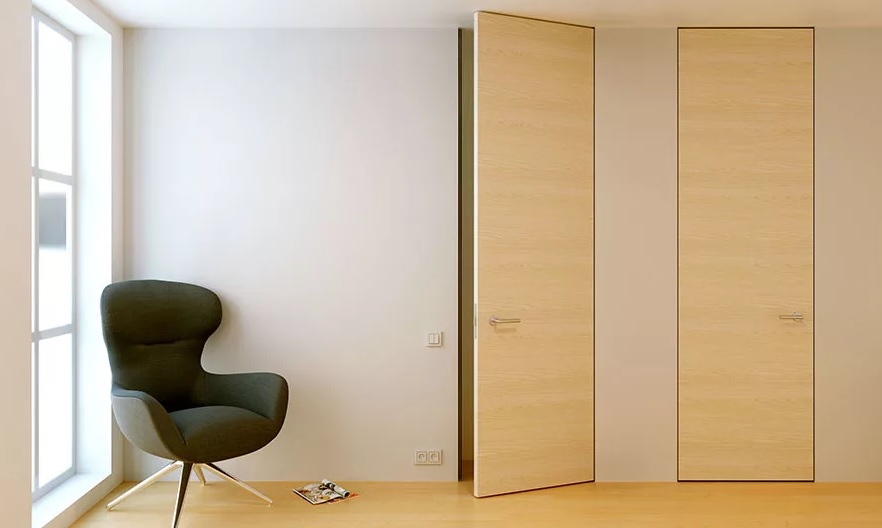
- High quality reliability;
- original design;
- Noise isolation at 42 decibels.
- Too high cost.
3rd place: "Lanfranco", model "Leonardo PF2 (antique walnut)"
This model is the brightest representative of the classic variants of interior doors, where the “deaf” leaf is firmly connected with two panels of the “tulipier” array, and the traditional box, together with the sealant, completes the entire structure. At the same time, the kit comes with a "Leonardo" type casing (double-sided). The recommended cost for retail chains is 68,000 rubles.

- Fine natural wood;
- Elegant aging;
- Door massive parts;
- Fine handmade;
- Application of wax-based varnish;
- Increased sound insulation.
- Not detected.
2nd place: "Soundproof interior sliding door Profile Dors X-classic No. 24X-Classic"
votes 0
It has an almost universal design. Decorative finishing of this sample and its deep milling will decorate any interior. With a width of 86 mm, it is suitable for both apartments and offices or private houses. Built-in refractory and armor-piercing glass will protect the owner from unforeseen misfortunes. The model easily tolerates changes in the level of high humidity and temperature, does not burn under UV rays. Well-made fittings of this door can last at least three decades. Anti-removable pins and reliable latches make this door an almost invulnerable solution for creating a "Panic Room" in the house. Decorative finishing of a leaf, its deep milling, will decorate any interior. The applied innovative contour technology makes this door sound and moisture resistant. The recommended cost for retail chains is 53,000 rubles.

- Excellent armor-piercing inserts - NATO 5.65 cartridge and SEV GRAU 5.45 cartridge (standard "Kalash" and "M-16" - will not penetrate);
- Decent block;
- Versatility.
- Super high cost.
1st place: "Door Continent", model "Garant-100"
votes 0
Durable and resistant to mechanical damage steel door Garant-100 has a high sound insulation. Two locks - the main and additional, the latch "for the night" and the peephole - provide comfort and protection. Such a door will last a long time due to high-quality compacted contours. Lightweight polystyrene foam material, which does not give in to combustion, will add soundproof qualities to this interior door.The anti-corrosion front coating will allow you to install the door leaf both at the entrance of a high-rise building, and outside at a private house, or in public buildings. The recommended cost for retail chains is 60,000 rubles.
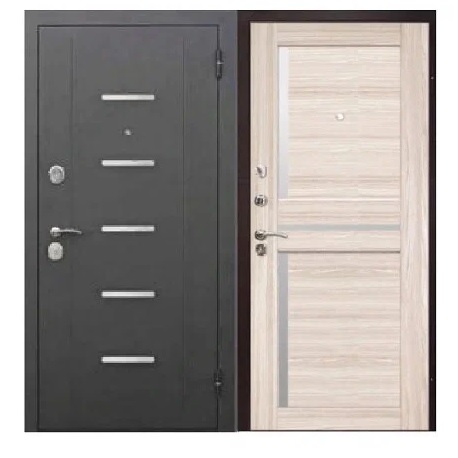
- Sturdy frame;
- The presence of a two-lock system;
- Wide scope.
- Not detected.
Conclusion
Proper soundproofing of the doorway can ensure the privacy of important negotiations and personal space too. It will help people with different daily cycles, needs and hobbies get along in the same room or in the house. Behind a high-quality soundproof door, it is possible to freely listen to loud music, rehearse the performance of a musical group or joyfully cheer for your football team, without risking disturbing the peace of a loved one sleeping in the next room. However, it is worth remembering that the possibilities of soundproofing interior doors are somewhat limited for quite objective reasons, and if it is not possible to make complete insulation by installing professional acoustic doors, then you can try to negotiate with the “noise source”, for example, by sending him to take a walk outside.
new entries
Categories
Useful
Popular Articles
-

Top ranking of the best and cheapest scooters up to 50cc in 2025
Views: 131656 -

Rating of the best soundproofing materials for an apartment in 2025
Views: 127697 -

Rating of cheap analogues of expensive medicines for flu and colds for 2025
Views: 124524 -

The best men's sneakers in 2025
Views: 124041 -

The Best Complex Vitamins in 2025
Views: 121945 -

Top ranking of the best smartwatches 2025 - price-quality ratio
Views: 114984 -

The best paint for gray hair - top rating 2025
Views: 113400 -

Ranking of the best wood paints for interior work in 2025
Views: 110326 -

Rating of the best spinning reels in 2025
Views: 105334 -

Ranking of the best sex dolls for men for 2025
Views: 104373 -

Ranking of the best action cameras from China in 2025
Views: 102221 -

The most effective calcium preparations for adults and children in 2025
Views: 102015
